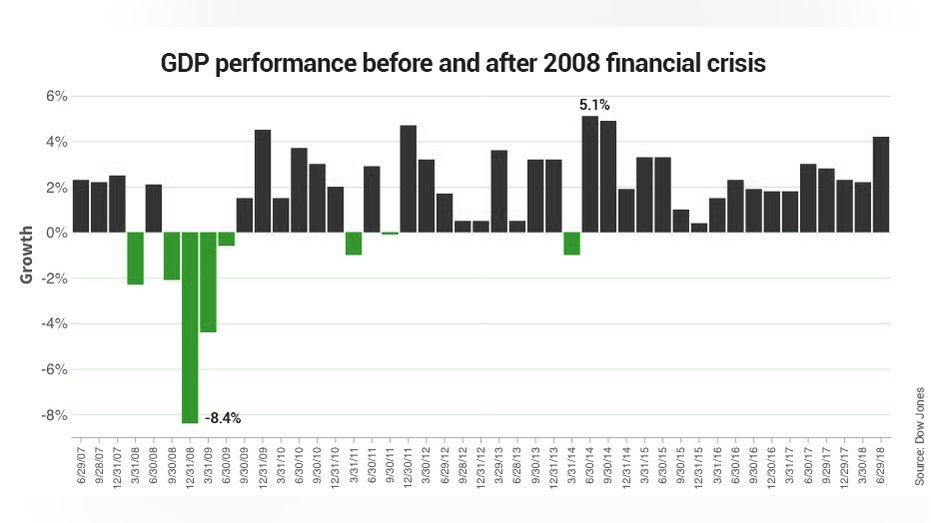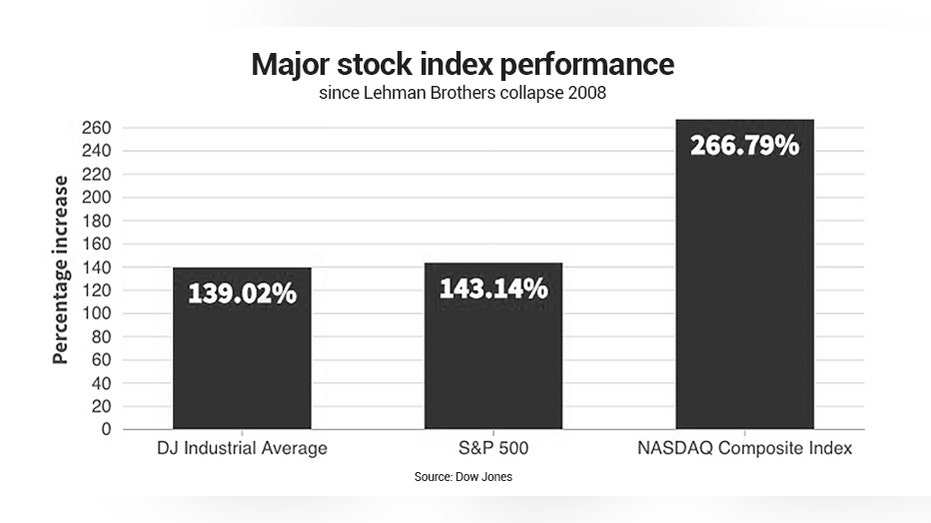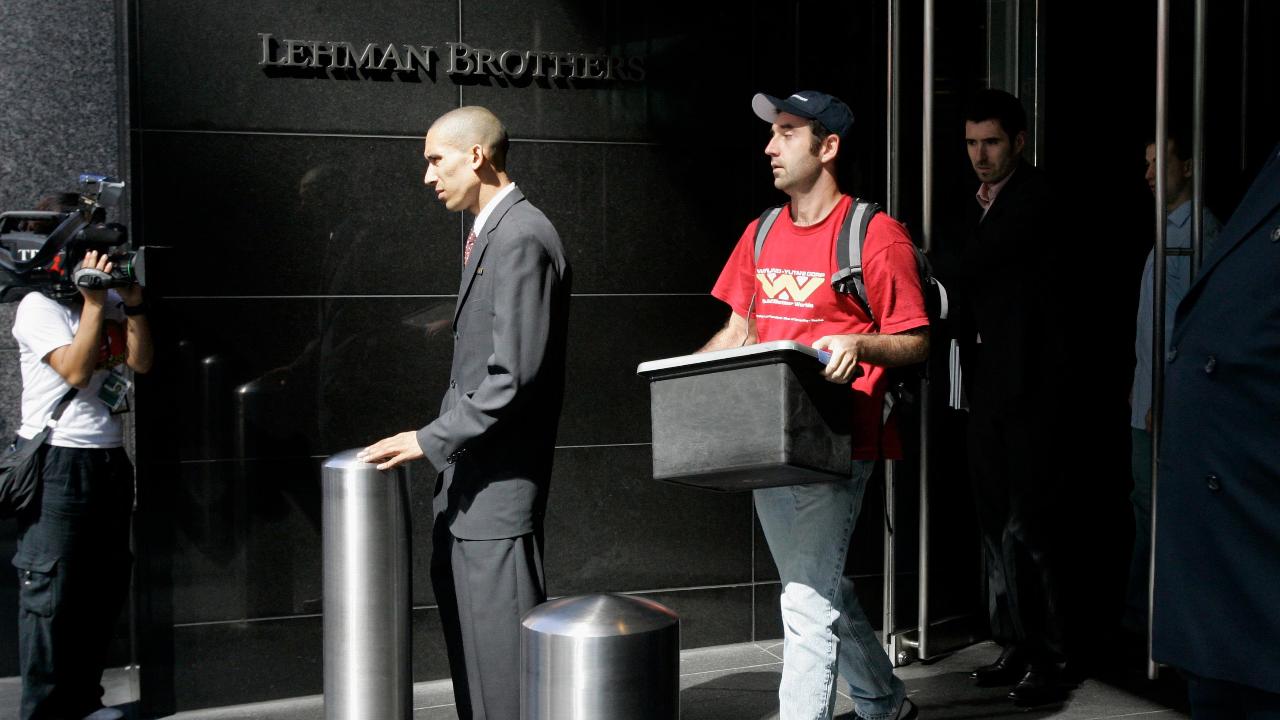Lehman Brothers collapse: Key lessons on 10-year anniversary
Ten years ago, the collapse of investment bank Lehman Brothers traumatized Wall Street and, along with related financial and economic crises, forced the government to take unprecedented steps that reshaped the financial world.
With heavy investments in a collapsing U.S. subprime mortgage market triggering billions of dollars in losses and a cratering share price, Lehman Brothers found itself in desperate need of a white knight -- outside investor or a government bailout -- to survive. When no source of much-needed capital materialized, Lehman Brothers filed for Chapter 11 bankruptcy on Sept. 15, 2008 – the largest such filing in U.S. history.
Lehman Brothers’ bankruptcy was just one of several major blows that occurred in rapid succession. Merrill Lynch was forced to sell itself to Bank of America, while venerable institutions Fannie Mae and Freddie Mac were placed into a government conservatorship. Within days, the U.S. economic landscape had upended.
“In the day-by-day, and almost hour-by-hour, sequence of shocking events, the powerful logarithmic waves of damage showed just how interconnected we all were within the financial system,” Darrell Cronk, president of the Wells Fargo Investment Institute, said in a recent note.

The bank’s collapse after more than a century in business had a catastrophic impact on the U.S. economy. The Dow Jones Industrial Average plunged more than 500 points in a single day of trading after the announcement. The U.S. unemployment rate quickly surpassed 10 percent and tens of thousands of Americans lost their homes to foreclosure, including more than 800,000 in 2008 alone, according to RealtyTrac data.
Facing the possibility of the total collapse of the nation’s economy -- and thus the global economy -- the U.S. government pumped $1.5 trillion in stimulus over a five-year period to help keep leading financial institutions afloat and maintain liquidity in financial markets. The Federal Reserve rolled back interest rates to near zero to encourage spending and went on a bond-buying spree that more than quadrupled the size of its balance sheet.
With the benefit of a decade of hindsight, the drastic measures appear to have worked. U.S. markets erased crisis-era losses and reached all-time highs, while unemployment currently stands below 4 percent. But a decade after Lehman Brothers closed its doors, the 2008 financial crisis’ effects are still being felt.

Here are some key lessons that have become apparent in the years since the bankruptcy filing.
Stricter regulation works
The collapse of Lehman Brothers and near-implosion of other major banks were a key factor in the U.S. government’s implementation of the Dodd-Frank Wall Street Reform and Consumer Protection Act, a 2010 federal law. Dodd-Frank enacted a lengthy series of requirements that aimed to improve transparency among financial institutions and prevent another crisis that could topple major banks.
Banks must now undergo annual “stress tests” to prove that they have enough cash on hand to survive in the wake of a major financial crisis. The 35 largest U.S. banks all passed the most recent edition of the Federal Reserve’s annual test last June.
Risk management is a necessity
The 2008 financial crisis effectively forced banks to give more credence to risk management – the practice of assessing potential weak spots in their portfolios before they can do permanent damage. The role toxic subprime mortgage lending played in Lehman’s collapse highlighted this necessity.
“Addressing risk management in advance, and reviewing portfolio risk relative to goals on a routine basis, can keep us grounded and flexible when the next inevitable tremors rattle the foundation,” Cronk said.
The markets are resilient
After posting major declines that exacerbated economic fears during the financial crisis, major stock indexes have more than recovered their losses. Since Lehman’s implosion, the Dow Jones Industrial Average has risen by 139 percent since the bank’s bankruptcy filing, while the Nasdaq Composite Index has risen 266 percent.

The 2008 crisis’ impact is still being felt
The U.S. economy will likely never fully recover from the 2008 financial crisis, according to a recent report by the Federal Reserve Bank of San Francisco. The banking industry’s near-failure resulted in a “persistently lowered output” by about 7 percentage points, costing the average American worker thousands of dollars in potential income.
“In dollar terms, it represents a lifetime income loss in present-discounted value terms of about $70,000 for every American,” the report said.
The Associated Press contributed to this report.
